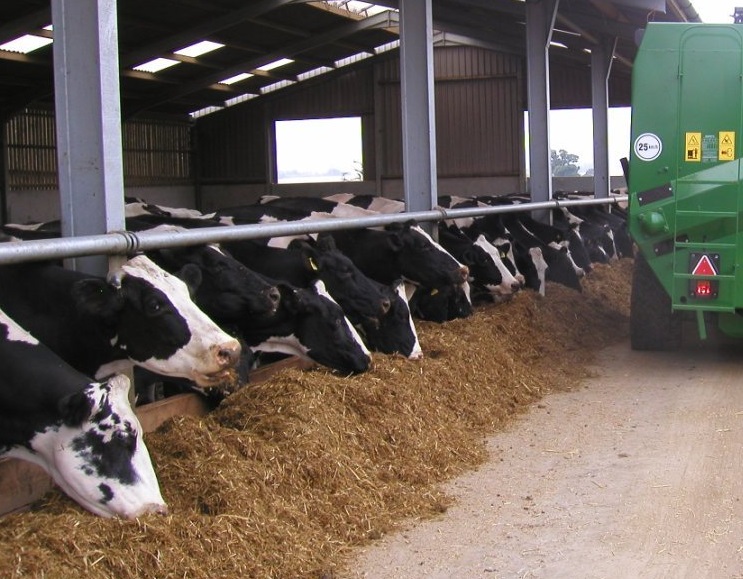With the winter months upon us, dairy farmers in spring-calving systems will soon be looking towards drying off some of the lower yielders.
After a hectic year, with plenty of challenges, both inside and outside the farm gate, farmers will be glad of a much-needed break from the milking parlour over the dry period, and a chance to recharge the batteries before the heavy workload of next spring commences.
Over the past month, Altech and KEENAN have looked at the importance of correct mineral nutrition and also the role of body condition scoring for the dry cow. This week, it will focus on the other two pillars of the Alltech/KEENAN dry cow programme: Nutrition and management.
Nutrition
A dry cow will typically consume over 2% of their body weight in dry matter on a daily basis. What you feed the cow during the dry period will have a major impact on body condition, which, in turn, impacts performance at calving and in early lactation.
It is vital that farmers first know the body condition score (BCS) of the cow at drying off, as well as the energy value of their silage stocks. A dry cow offered ad-lib grass silage will eat approximately 55kg. Even at a very low dry matter digestibility (DMD) value, this will put on condition on a dry cow, and cows that are currently in ideal condition will be over-conditioned at calving.
For that reason, we must focus on restricting energy in the diet to eliminate issues with fat cows at calving. There are two ways to curtail a cow’s energy intake. The first is by limiting the amount of feed she eats, and the second is by reducing the energy density of the diet.
Restricting a cow’s feed is not advisable, as the stress created could equally lead to similar problems at calving. Therefore, we need to reduce the energy density of the diet by diluting it down using a low-energy feed, such as straw.
The Controlled Energy High Fibre (CEHF) diet is now commonly seen on farms in Ireland and abroad. This programme involves drying off the cow at the ideal body condition (3–3.25) and only giving a maintenance diet for the full dry period.
Other benefits of this diet/programme include:
- Saving of up to 60% of grass silage;
- Reducing overall dry-cow-diet costs compared to ad-lib grass silage;
- Dilution of high-potassium silages linked to metabolic issues;
- High-fibre content, keeping animals fit and not fat at calving;
- Reduction in overall metabolic issues at calving;
- Driving intake and reducing negative energy balance post-calving;
- Reduction in overall metabolic issues at calving. Past research by KEENAN showed a 50-85% reduction in metabolic issues based on a survey of 24,000 cows giving an average benefit of €51/cow.
Management
With the increase in cow numbers on many dairy farms in recent years, and an increased focus on intensive block calving, farmers are often facing challenges, both in terms of facilities and labour, to manage these increased numbers.
However, overlooking vital management practices in your dry cow period will only result in issues around calving and result in increased costs in your system next spring.
The focus should be on keeping cows stress free. Group changes can negatively impact dry matter intake (DMI) and should be avoided as much as possible.
In an ideal world, dry cows should be moved to the calving box no closer than 14 days pre-calving; however, this is not an option in most modern spring-calving systems (this would require a large amount of space, due to the compact calving system).
However, if movement is required immediately, then pre-calving as late as possible (water bag, feet showing) is the correct procedure.
Dry cows need one cubicle/cow, one feed space and a 90% stocking rate three weeks’ pre-calving. A feed space would be considered at around 2ft/cow, so 100 dry cows would need 200ft of feed space. This often seems to be an oversight on farms when deciding how many cows they can house.
Clean water should always be available for dry cows. A rough guideline of 5cm of trough length should be available. Cleaning troughs are essential, as faecal matter will build up. This should be done weekly.
Management of dry cow feed is important. Pit face and forages used should be monitored carefully for moulds.
Moulds can cause many issues in dry cows that might not come to the surface until post-calving, such as abortions or metritis. Mouldy silage should not be fed, and if there is a suspicion of mould, a mycotoxin binder, such as Mycosorb A+®, should be used.
Dry cow webinar
For more information on how to successfully manage your dairy herd this dry cow period, join KEENAN for its dry cow webinar on Thursday, November 26, at 8:00pm.
The event will feature members of the KEENAN and InTouch nutrition teams, as well as a farmer discussion chaired by renowned veterinary specialist Martin Kavanagh. To register, just click here


